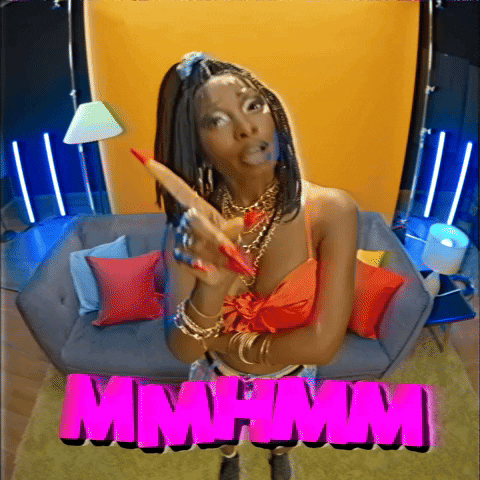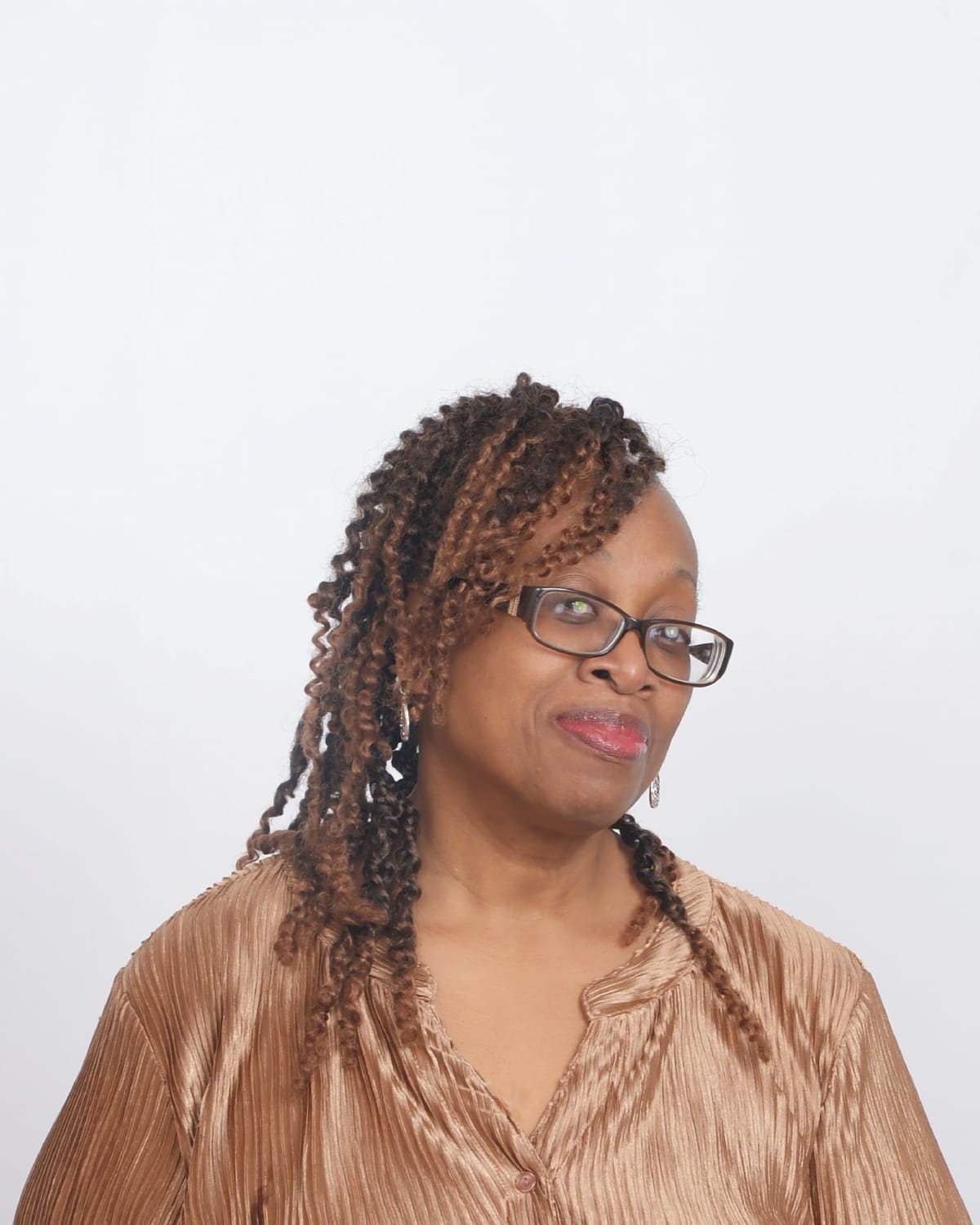Hey yall,
When Monica beautifully sang, "Just one of dem days, that a girl goes through," I'm sure every girl, gay, and they collectively nodded and let out an emphatic "Mmhmm!" as they toiled in their teenage bedrooms, flipping through Seventeen magazine and waiting for their latest CD playlist to burn.
It’s been one of those days, hell, weeks for me. By the time this letter comes out, I’ll be a few days post-op from removing uterine fibroids. Fibroids are little devilish, noncancerous growths that can appear right when you finally decide you actually do want kids, and wreak havoc on the potential of that happening. They can interfere with your flow, causing it to be longer, heavier, and more painful. They can cause your stomach to bloat so every meal you eat is your enemy. They can make sex excrutiating or just steal your desire for it entirely. They can block up your digestive system, cause unexplained weight gain, anxiety, and fatigue, and sadly that’s just a short list of potential symptoms.
The kicker? While fibroids are generally common for most women, they especially affect Black women. According to McLeod OB/GYN Dr. Monica Ploetzke, Black women suffer from fibroids 2–3 times more than white women. About 25% of African-American women will suffer from fibroids by the age of 25 and 80% will have them by the age of 50 (compared with 70% for white females).”
While I hate it for me that I’m a common statistic, I’m so excited to evict these unwanted tenants and get back to my life. In the meantime, please send good vibes and prayers. Can’t wait to share this story here when I’m on the other side!
Take care,
Anayo Awuzie
EIC of Carefree Mag
My Curvy Body: The Temple of My Black Woman Familiar
By Jeanine DeHoney
“Being a woman of curves, I find that it’s very important to talk about loving your body where you are.” - actress and singer, Danielle Brooks
I remember many years ago, when I was taking an art class in college, overhearing a whispered conversation between two white male students about the Black live model who stood in front of us. One of them made unflattering gestures with his hands to show the curvy physique of the model, while the other one snickered.
I kept working on my drawing, smudging charcoal with my incensed fingers, shading the contours around her hips—hips so similar to mine.
When the class was finished, after she covered her curvy body with a robe, I went up to her and said I admired her confidence and told her she was beautiful. While I would never be gutsy enough to pose nude like her, I also wasn’t gutsy enough to embrace my own womanly curves, the temple of my familiar.
I had always been self-conscious about my body. I inherited the thick thighs and hips of my mother’s side of the family, and although I sometimes heard the elder women shake their head in admiration and say, “She sure got some big, pretty legs,” I would feel ill at ease. If I wore a skirt, I’d try to pull it down to cover those “pretty big legs,” as much as I could. This discomfort in my body lasted well into my teens.
I went to a predominately white middle and high school, and while there were a few other Black girls like me in the neighborhood, I was surrounded by my white friends.
They were thin and wore the kind of jeans I had to struggle to fit into because they didn’t stretch to fit my curves. From experiences like these to the models in mainstream fashion magazines, I felt deeply that my body wasn’t what society found to be beautiful. At that time, supermodel Beverly Johnson had shattered the glass ceiling and was one of the first women of color to be featured in high fashion campaigns and glossy magazines.I would proudly peruse through each issue she was in as a teenager. Still, it was rare to see curvy brown women in magazines and I believed my curves were supposed to be hidden.
Not embracing my curvy self caused me to buy into the adopted dictum of a Eurocentric perception of beauty. I tried to fit into a culture where there is an emphasis on thinness and not on the beauty of other body shapes and sizes of women, especially women of color. This led to me going on crash diets that were detrimental to my health, exercising at one point to the point of exhaustion, and wearing baggy clothes to cover these parts of me that I believed were unflattering. For years, my weight would yo-yo up and down in my quest to be thin.
That negating message about my body was tattooed into my spirit, and even when others, my mother, aunts, and other women, whispered in my ear and said something different out loud, their gifts of affirmations to me didn’t last.
Years into my adulthood, after giving birth to two sons and then a daughter, I knew I had to dive deep into the why of my self-loathing for my curvy body and learn how to supremely love all of me. I wanted my sons to become men who saw the absolute beauty of all Black women, especially curvy women. And I didn’t want my daughter to grow up with the issues that I did. I wanted her to love her own temple and see the beauty in it, no matter her size.
I reflected on what made me carry such a weighty cloak of body shame that mired the exuberance in my spirit. I realized that listening to a few who didn’t love their own bodies when they looked in the mirror was one reason. And not looking fully at myself and speaking lovingly to each body part, but instead pointing a finger at what was wrong with my body, was another.
I had lost my way when it came to embracing my curvy temple, and I had to find my way back. I did, eventually by journaling and repeating affirmations to myself. It was a long process, but I learned to be protective and the loving keeper of the curvy me, thus my whole being, inner and outer.
I began to recognize the unique tapestry of the full-bodied Black women who were a part of me and extended that love and body acceptance towards them; my mother, grandmother, aunts, and other female family members. Even if they may not have felt this way all the time as they maneuvered through their lives, when I thought about them, I smiled because they walked as if they were doing the earth a favor by gracing it with their regality. They didn’t let their size stop them from doing, being, or becoming. Learning to embrace myself through their sparkle and shine was key to helping me embrace my curves.
Loving my curves means seeing the true measure of my body, and shaking off society’s antiquated, narrow standards about curvy women of color and women who are different from the commercial norm.
Loving my curves means speaking to and about my body with generous, bountiful words and sweet adulation.
It is in how I dress, now, in clothes made by designers that celebrate women with curves, and how I undress, now able to stand naked in a full-length mirror admiring my wide hips.
My curvy body is the temple of my Black woman familiar.
My curvy body is art—a haiku poem, a love sonnet, a Faith Ringgold painting, an astounding instrument. Our bodies are beautiful, like the Black women in our circle and those we see in passing. And lest we forget, the true measure of our beauty as Black women is not just in our curves, no matter what shape or size we are, our beauty is in the magnificence of our minds, the passion in our hearts, the liberation of our spirits, how we nurture others (without neglecting ourselves), and the way we make our mark in this world.
Jeanine DeHoney has had her writing published in ESSENCE, Empowerment For Women, Sisters AARP, and more. She won first place for her poem in the 2022 Colorism Healing Writing Contest, which was published in an anthology. She was also chosen as an honor winner for Sleeping Bear Press’s Own Voices, Own Stories 2022 Award season. Sleeping Bear Press will publish her children’s book in the summer of 2025.








Society can be cruel and sometimes makes us feel less. What's important is never allowing oneself to be swallowed up in the negative narrative that can be spewed out, forever. Nice article.